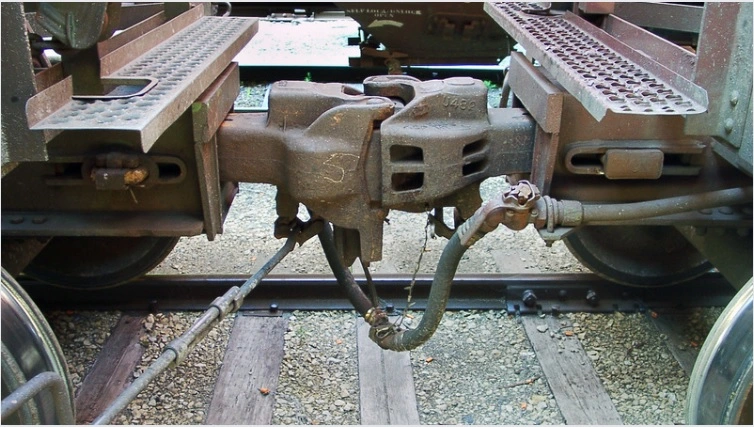The Pitman arm is a vital component of your vehicle’s steering system, connecting the steering box to the center link. Its primary function is to convert the rotational motion of the steering wheel into lateral movement that controls the direction of your wheels. Without a properly functioning Pitman arm, your ability to steer accurately and safely would be compromised.
As you turn the steering wheel, this component transmits this input through its linkage, assisting in turning the front wheels left or right. This seamless process ensures responsive handling and precise control over your vehicle’s direction. By understanding how this integral part operates within your car’s steering mechanism, you can appreciate its importance in maintaining smooth and efficient driving performance.
What Is a Pitman Arm
A pitman arm is a crucial component of your vehicle’s steering system. It is connected to the steering box and helps to transfer the motion from the steering wheel to the wheels, allowing you to control the direction of your car. This converts the circular movement of the steering box into linear motion, which then moves the center link and ultimately turns your wheels.
Due to its role in translating steering inputs into actual movement, a well-functioning pitman arm ensures that your vehicle responds accurately and smoothly to your commands. It plays a key part in maintaining proper alignment and stability while driving, contributing significantly to overall safety on the road.
Why Is it Important to Maintain Your Pitman Arm
Your vehicle’s steering system is a critical component that ensures you can maneuver safely on the road. The pitman arm plays a vital role in this system by transferring the motion from the steering box to the center link, allowing your wheels to turn in response to your steering input.
Maintaining it is crucial for ensuring precise and responsive steering. Over time, wear and tear can cause the pitman to loosen or develop play, leading to imprecise handling and potential safety hazards. Regular inspection and maintenance of your pitman arm can help prevent these issues before they escalate. Neglecting maintenance of this component can result in poor alignment, uneven tire wear, and compromised steering control. By keeping your pitman arm properly maintained, you not only ensure a smoother driving experience but also enhance overall safety on the road.
Signs of a Failing Pitman Arm
When it comes to your vehicle’s steering system, the pitman arm plays a crucial role in ensuring smooth and controlled movement. However, like any other component, the pitman arm is subject to wear and tear over time. One of the key signs of a failing pitman is excessive play or looseness in the steering wheel. If you notice that your steering feels loose or imprecise, it could indicate a problem with the pitman. Another common symptom is vibration or shaking in the steering wheel when driving at high speeds.
Additionally, if you experience difficulty turning the wheel, especially when making sharp turns or navigating tight spaces, this could be a sign of a worn-out pitman arm. You may also hear clunking or knocking noises coming from underneath your vehicle while turning, which can point towards issues with the pitman arm. It’s essential to address these warning signs promptly to prevent further damage and ensure safe driving conditions on the road.
How to Replace a Pitman Arm
- When it comes to replacing a pitman in your vehicle’s steering system, it’s essential to follow the proper steps for a safe and effective repair. Here is a general guide on how to replace a pitman.
- Make sure your vehicle is securely lifted and supported on jack stands before starting any work underneath.
- Next, locate the pitman arm beneath the vehicle near the steering gearbox. You may need to remove other components or shields for better access.
- Once you have clear access, use appropriate tools such as wrenches and pullers to loosen and remove the old pitman from the steering linkage.
- After removing the old pitman arm, carefully install the new one in its place ensuring proper alignment with the steering gearbox and linkage.
- Tighten all bolts securely and double-check your work before lowering your vehicle back down. It’s always recommended to consult a professional mechanic if you’re unsure about performing this task yourself.
Common Pitman Arm Issues and Solutions
Common Pitman arm issues can arise over time due to wear and tear. One common problem is excessive play in the steering, which can cause a loose or sloppy feeling when turning the wheel. Another issue is worn ball joints on the pitman arm, leading to difficulty steering or erratic movements. Rust and corrosion can also affect it’s performance, causing it to seize up or become stiff while turning.
To address these problems, it’s important to regularly inspect your pitman for any signs of damage or wear. If you notice any issues, replacing it with a new one is usually necessary. Additionally, ensuring proper lubrication of the pivot points on the pitman arm can help prevent premature wear and extend its lifespan. By staying proactive with maintenance and addressing any issues promptly, you can keep your vehicle’s steering system functioning smoothly and safely.
Maintenance Tips
To ensure your vehicle’s steering system functions smoothly, proper maintenance of the pitman arm is crucial. Regularly inspect the pitman arm for any signs of wear and tear, such as excessive play or looseness. Additionally, make sure to keep the pitman properly lubricated to reduce friction and prolong its lifespan. Regularly check for any leaks or damage in the steering system that could affect the performance of the pitman. It’s also important to have a professional mechanic inspect the pitman arm during routine maintenance checks to catch any potential issues early on.
When driving over rough terrain or encountering potholes, try to avoid putting excessive strain on the steering system and consequently on the pitman arm. Being mindful of how you drive can help prevent unnecessary stress on this essential component.
Conclusion
Understanding the role of a pitman arm in your vehicle’s steering system is crucial for maintaining safe and efficient driving. The pitman arm serves as a vital link between the steering gearbox and the steering linkage, helping to transfer motion from the gearbox to control the direction of your vehicle.
Regular maintenance and inspection of your pitman can help prevent potential issues such as vibration, loose steering, or uneven tire wear. Being aware of signs indicating a failing pitman and knowing how to properly replace it are essential for keeping your vehicle’s steering system in top condition.









